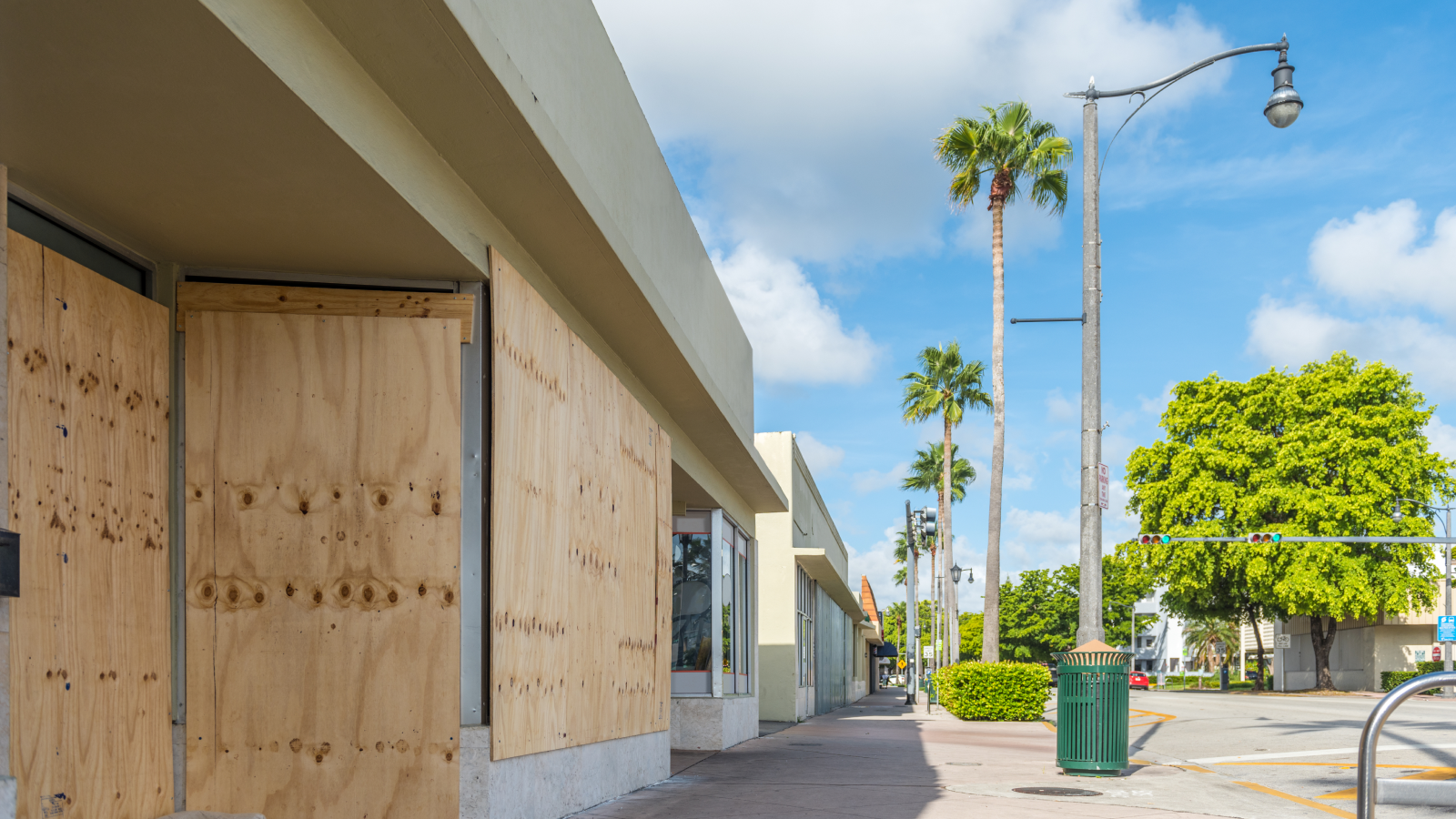Hurricane Prep for Businesses

When a hurricane is on the horizon, the safety of your employees and the security of your business operations become top priorities.
Whether you run a small storefront or a large organization, early preparation can make all the difference in how quickly you recover.
Hurricanes adn tropical systems typically come with several days of advance warning, giving business owners valuable time to prepare. Forecasts from the National Hurricane Center can predict a storm’s path and intensity up to five days ahead, with watches issued 48 hours before expected hurricane-force conditions and warnings within 36 hours.
1. Create an emergency plan
The first step in preparing for a hurricane is having a solid emergency plan in place. This doesn’t have to be complicated, but it should be thorough.
- Start by identifying key roles and responsibilities: who’s in charge of communicating changes, securing the building, or managing remote work or schedule adjustments? Make sure everyone on your team knows their role and has what they need to act quickly. Clear responsibilities can help avoid confusion and keep things running smoothly before, during, and after the storm.
- Include evacuation routes and shelter-in-place procedures in your plan and share it with your employees.
- Create a communication strategy that would work even if the power or internet goes down.
- Keep an updated contact list for all employees, vendors, and emergency services.
- Save copies of your emergency storm plan in multiple formats (digital and printed) and revisit it with your team at least once a year.
2. Protect your property
Securing your physical space is key to minimizing damage and speeding up the recovery process.
- Inspect your building to ensure the roof, windows, and doors are secure and ready for strong winds.
- Install storm shutters or board up windows to protect against flying debris.
- Move valuable equipment and inventory off the floor and away from windows to prevent water damage.
- Cover electronics and machinery with waterproof materials or relocate them to more secure areas.
- Bring in outdoor items like furniture, signage, or anything that could become a hazard in high winds.
- Trim trees and clear debris around your business property.
- If local authorities recommend it, turn off your utilities (gas, water, electricity) to prevent fires, flooding, or electrical hazards.
3. Backup important data
Storms can knock out power, damage equipment, or make your building inaccessible, so it’s essential to have your data backed up.
- Back up important business files to a secure, cloud-based storage system so they’re protected and accessible from anywhere.
- Schedule regular backups for systems and documents.
- Store physical records in waterproof containers or move them to a secure offsite location.
- Test your backup systems regularly to make sure everything can be restored quickly if needed.
- Keep important credentials and access instructions in a safe but reachable place so your team can act fast if systems go down.
One of the most important things to remember about storm prep is that waiting until the last minute can cost you. Supplies run out, communication gets harder, and stress levels rise. The earlier you can start preparing—securing your building, assigning roles, and protecting important data—the smoother things will go when the storm hits.
4. Stock up on emergency supplies
Having the right supplies on hand can make a big difference during and after a hurricane—especially if you or your employees need to shelter in place.
- Water and food: Store plenty of bottled water and non-perishable food to support your team for at least 72 hours.
- Power and light: Gather flashlights, extra batteries, battery-powered radios, and backup power sources like portable chargers or generators.
- First aid: Stock a basic first-aid kit with bandages, antiseptics, medications, and any other helpful supplies.
- Emergency tools: Include items like multi-tools, duct tape, fire extinguishers, sandbags, tarps, and trash bags.
- Other essentials: Don’t forget hygiene items, gloves, and cleaning supplies.
5. Review your insurance coverage
Before hurricane season arrives, it’s a good idea to take a close look at your business insurance policy or schedule a review with your agent. Knowing what’s covered—and what might not be—can save you from major headaches later.
- Confirm your policy includes storm-related damages (wind, water damage, business interruption, etc.).
- Understand your deductibles and limits, especially for storm-specific claims.
- Make sure your coverage reflects your current property value and assets, including any recent upgrades or purchases.
- Ask your agent about additional coverage options that you could benefit from. Keep in mind that most standard business policies don’t cover flooding, so if your business is located in an area prone to flooding, it might be worth getting a separate flood insurance policy.
- Document your property and inventory with photos or videos to make the process easier if you need to file a claim.
- Keep printed and digital copies of your insurance policy in a secure, accessible place.
Weathering the storm starts with a plan—and a policy
While you can’t control the forecast, you can control how prepared you are. Part of being ready means having the right insurance coverage in place. A strong policy can help your business recover from unexpected losses and keep everything on track for when the skies clear.
For coverage that truly fits the needs of your business, reach out to your local Alfa® agent for a free business insurance quote.
All coverages are subject to deductibles and policy limits. This is not an insurance policy. It is intended only to provide a general description of Alfa Insurance® and/or its product lines and services. An actual policy contains the specific details of the deductibles, coverages, conditions and exclusions. Your Alfa® agent can explain the policy and benefits and answer any questions you may have before you buy.